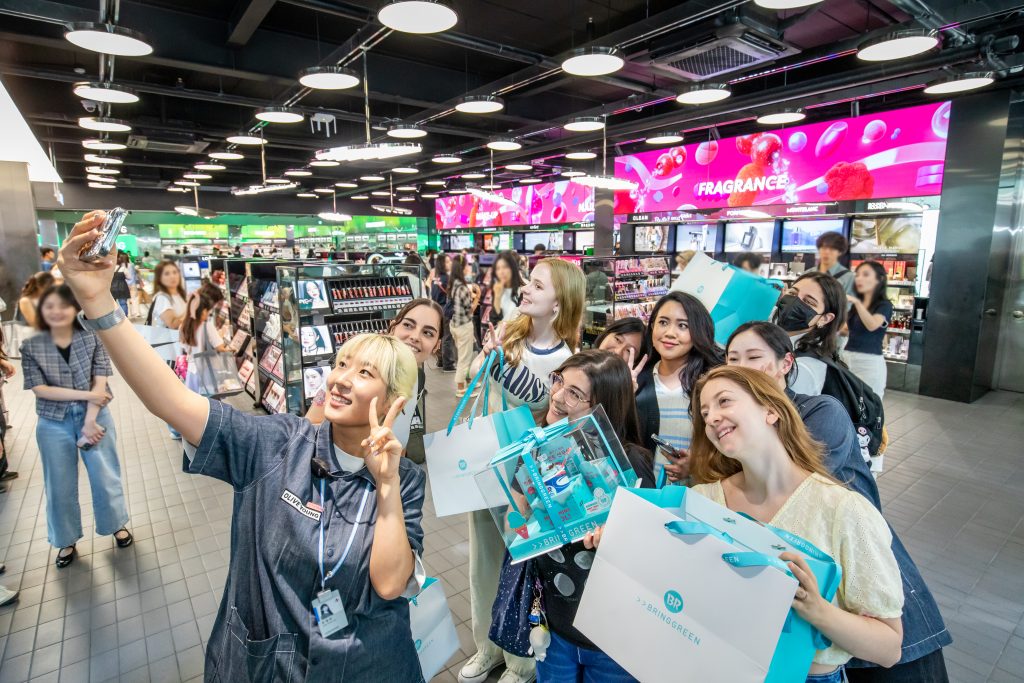
Credit and cash cards issued abroad are being used more at businesses such as instant photo studios, nail salons and coin-operated noraebang (karaoke rooms), domestic media including Yonhap News reported on Aug. 19. Shown are foreign visitors in June last year taking a group selfie in front of the Myeong-dong branch of Olive Young, a health and beauty franchise, in Seoul's Jung-gu District. (CJ Olive Young)
By Charles Audouin
Credit and cash cards issued abroad are being used more at domestic businesses such as instant photo studios, nail salons and coin-operated noraebang (karaoke rooms), domestic media outlets including Yonhap News said on Aug. 19.
Shinhan Card's Big Data Research Center compared card purchases in the country by tourists from Taiwan, the U.S., Japan and China from January to July this year from the same period last year.
The study showed that the number of foreign tourists using the instant photo studio Life 4 Cuts in the first seven months of this year surged 65% year on year. The increase at nail shops was 17%, noraebang 18% and internet cafes 36%.
Shinhan Card said, "Demand to directly experience the Korean lifestyle and culture among Gen Zs and millennials has risen, so consumption in such industries is increasing."
Spending at museums and on medical tourism and cosmetics and beauty also rose. The number of visitors to national museums rose 37% over the past year, dermatological clinics 11% and plastic surgery clinics 16%.
The number of tourists from Taiwan and China conspicuously grew. The number of Taiwanese who visited dermatology and plastic surgery clinics surged 53% and 55%, respectively, while the corresponding rates of Chinese tourists were 29% and 25%.
The number of foreign shoppers at the domestic cosmetics and health chain Olive Young soared 41%, while that going to the discount franchise Daiso rose 18% and convenience stores 29%.
Consumption by foreign tourists was mostly concentrated in Seoul with over 60%, but that in other regions also rose. Busan showed the biggest hike rate with 39%, greatly surpassing the growth rate nationwide (28%).
The number of foreign patients visiting private hospitals in Busan soared 97% year on year and dermatology clinics 68%.
The increase in spending at leading consumption businesses such as cafes, restaurants and convenience stores was the highest in Busan, followed by Gyeongju, Gyeongsangbuk-do Province, and Sokcho and Chuncheon in Gangwon-do Province.
Use of public transportation to get to provincial regions also rose, with rail accounting for 39%, express buses 30% and rental cars 24%.
"K-content is leading the stimulation of regional economies," Shinhan Card said. "Policy support is expected to accelerate visits to the provinces as the number of of foreign tourists and public interest will rise due to the upcoming Asia-Pacific Economic Cooperation Summit and other events in the second half of the year."
caudouin@korea.kr